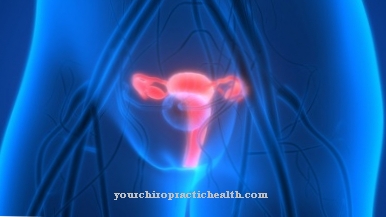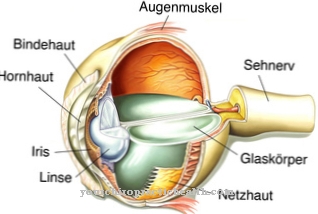The Abduction is the opposite of adduction and means the lateral spreading of limbs or hand and foot joints. The executing muscles are called abductors, and depending on the part of the body, several abductors can be involved in a single abduction. Abduction problems can be of a muscular or neural nature.
What is the abduction?

During abduction, a part of the body is moved to the side of the body. It is spread apart from the middle of the body or, in the case of extremities, from the longitudinal axis of the respective extremity. The leadership level of the abduction movement is also called the frontal level.
The opposite of abduction is what is known as adduction, which also takes place on the frontal plane, but continues in the opposite direction. In adduction, unlike abduction, a body part is brought laterally to the middle of the body or the longitudinal axis of extremities. This movement is also called donning.
The two opposing movements are performed by different muscles. The muscles used for abduction are called abductors. Those for adduction are analogously referred to as adductors. Both types of muscle are innervated by peripheral motor nerves that receive their commands from the central nervous system. Like adduction, abduction can also take place in the context of voluntary motor skills as well as in the context of involuntary reflex motor skills.
Function & task
The mobility of the human limbs is excellent and includes directions of movement such as abduction and adduction. In addition to the legs, the human toes, arms, hands, toes and thumbs are capable of abduction in the sense of a splaying movement.
The hand, for example, knows two different types of abduction: the radial abduction and the ulnar abduction. During ulnar abduction, the hand or fingers move in the direction of the elbow. So they are bent towards the little finger side. The carpal joint is moved using various muscles, primarily the extensor carpi ulnaris muscle, the flexor carpi ulnaris muscle and the extensor digiti minimi muscle. Radial abduction is the opposite movement. The fingers or the hand do not move in the direction of the ellipse, but in the direction of the spokes. So they are bent towards the thumb side. In addition to the wrist joint, the muscles of the extensor carpi radialis longus, the abductor pollicis longus and the extensor pollicis longus, the flexor pollicis longus and the flexor carpi radialis muscles are involved in this abduction movement.
Accordingly, abductions are complex movements and result from an ideal interplay of different muscles, tendons and joints. The muscular abductors contract in order to initiate the movements and thus move the joint concerned.
Abduction is critical to various movements and activities in everyday life. For example, when walking, the abduction of one leg initiates a step to the side. Abduction is also required when the arm has to be lifted outwards. The same applies to the spreading movements of the fingers.
Abduction usually takes place actively, but can also be initiated passively in the course of examinations. For example, the doctor can check the mobility of certain limbs, even if the patient cannot actively move them. The abduction is given in degrees. Depending on the limb, different ranges are considered physiological.
You can find your medication here
➔ Medicines for muscle weaknessIllnesses & ailments
If abduction is no longer possible on a limb, only to a limited extent, or only possible with pain, the cause is either muscular or neuronal. Sometimes difficult abduction is also associated with joint diseases such as osteoarthritis, which mainly cause pain during movement. Stiffening of joints or muscles can in turn completely prevent abduction. The same goes for torn muscle fibers or torn tendons.
The neuronal causes for difficult abduction are diverse. For example, polyneuropathies of the peripheral nervous system, such as those caused by malnutrition, various infections or poisoning, are possible.
In polyneuropathies, the nerves of the peripheral nervous system are no longer conductive enough to initiate certain movements. However, the problem can also lie in the central or motor nervous system. The so-called motor neurons are located in the brain and spinal cord. They are the central switching point for voluntary motor skills, so that their damage can lead to various symptoms of paralysis.
The efferent pyramidal tracts, which run through the spinal cord and connect the first with the second motor neuron, are in direct contact with the motor neurons. If the pyramidal tracts are damaged, movement impulses from the central nervous system no longer reach the second motor neuron and cannot be passed on from the control center to the skeletal muscles. As a consequence, the abduction can be completely absent.
Lesions of the central motor neurons or the pyramidal tract can develop as part of various neurological diseases. In addition to inflammatory diseases such as multiple sclerosis, strokes, hypoxia or degenerative diseases such as ALS can also cause motor problems and thus abduction.
If the abduction of a particular part of the body is restricted, the doctor will check the motor deficit and indicate the remaining range of the abduction. In the course of the therapy, this process is repeated regularly in order to assess the success of the treatment or any worsening of the symptoms.



























